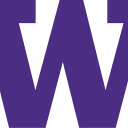
Learn and Connect: Making sure all our communities have enough to eat with Grocer-Ease
Contributors: Linda Vong, Abby Ellis, David Zarate, Danica Villez
Problem Overview: Washington state food deserts
Food is a basic human need, and for at least 2.3% of all U.S. households — 2.3 million people — that need is not being met for a multitude of reasons, including food deserts. Urban food deserts are areas that have limited supermarket accessibility, neighborhood income, food assistance programs, and other food access factors. In Washington State specifically, there are 17 urban food deserts, affecting more than 125,000 people. Folx living in urban food deserts who are the primary food purchaser for their household often experience challenges consuming and providing healthy foods due to time, physical distance, transportation, and cost limitations. Living in a food desert contributes to food insecurity and unbalanced diets, which can have significant short-term and long-term health consequences.
Solution Overview: Grocer-ease
We want to acknowledge that the underlying issues of poverty and racialized capitalism cannot be addressed in any single solution, but much of the approach to eliminate food deserts should be focused on people, community, and grassroots work. Our goal is that Grocer-Ease, our website, will help facilitate the use of overcomplicated food assistance social programs, as well as community mutual aid-oriented solutions. We decided on this website format because a website is one of the more accessible ways to learn and coordinate with others, whether people have access to a personal or shared device, whether it is a desktop computer, tablet, or mobile phone. Because many folx in our user group primarily learn about food programs by word of mouth, it is important that the website is easy to find, navigate, and share about — unlike something more device-specific like a mobile app.
We broke our design down into two categories: Learn and Connect.
- Learn — The learn page has tools to support folx in learning about what food programs and benefits they qualify for, how to go about using them, and which food retailers around them accept certain benefits.
- Connect — The connect page is a community forum where folx can organize with others in their neighborhood around mutual food aid and achieve things such as coordinating bulk food orders to make bulk shopping more affordable and viable.
Prototyping Process
In order to test our design, we first engaged in usability tests with our paper prototype. At this stage in the design process, our design contained 3 distinct tabs, learn, find, and connect (Figure 1). We conducted three tests using an interactive prototype and found some interesting commonalities in the outcomes of the tests. There was consistent confusion about which tab certain functionalities would be placed under, for example when asking testers to discover what programs they were eligible for, some went to the find tab instead of the learn tab, where the eligibility tool was actually located. Based on tester feedback, we decided to make the website easier to navigate by only using two tabs, learn and community, and to include a drop down menu from the learn tab with clear labels of what options were available.

Final Mockup
In moving from our paper prototype to finalizing our design mockup of Figma, we made these changes:
- Removed/toned down saturation of background shapes. Incorporated color scheme into other UI elements.
- Added visual indicator to the Connect page to show users that they can scroll down.
- Continued to improve minor details of user interaction
From the home page, users can navigate to the Learn or Connect, as shown in Figure 2 below.
To support the task of learning about what benefits one is eligible for and how to use them, users can use the eligibility tool, as previewed in Figure 3 below.
To support the task of finding community resources, such as signing up to be part of a bulk order, users can make, view, and interact with posts, as shown in Figure 4 below.
Putting it all together
By the end of our user testing, we identified that one of the greatest needs for our target group is to uncomplicate access to food programs and community resources. There are two types of resources that are needed. First, government/local organizations-aid available to many folx in our state. They could come from the federal government (e.g. SNAP), state government, county (e.g. King County), and city (e.g. Kent, Seattle). Second, there is a need to form a community. By connecting members of the same neighborhood, they can work together towards improving their access to food. So, what solutions are we offering? For the first kind of resources, we are creating a search engine of resources where people can put their information, which will lead to a list of resources they may qualify for. The second solution we are presenting is a community forum where people can create posts that will lead to buying in bulk, sharing transportation to grocery stores, community gardens, and many other cooperative solutions to the lack of access to nutritious food. Our vision with Grocer-Ease is to improve access to food programs and connect folx to community mutual aid, to ensure that all of our communities have enough to eat and thrive.
